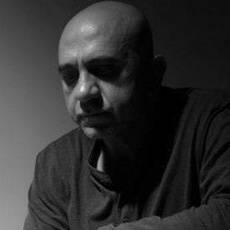
Joseph Harb was born in Lebanon in 1964, and holds a Bachelor's degree in Fine Arts from the Lebanese University.
In 1996, he received a scholarship from ALBA and the French Cultural Center in Beirut to attend a sculpture workshop in Cergy, France. He became a member of ‘’L’Association des Artistes Sculpteurs-Peintres Libanais” and of “the Salon d’Automne, Sursock Museum”, Beirut, where he regularly exhibited. He taught drawing at Holy Spirit University of Kaslik, Balamand University, and ALBA in Lebanon, before moving to the USA where he lived and worked from 2000 to 2009.
Since 1987, he has participated in different solo and group exhibitions in Lebanon and abroad such as ’’Convergence: New art from Lebanon’’, at Katzen Art Center at the American University, Washington DC (2010) with Galerie Janine Rubeiz.
With Galerie Janine Rubeiz, he took part in a number of collective exhibitions: "Pinceaux pour Plumes" (2006), “Clin D’oeil” (2014), “October 17, 2019”, and Beirut 2020. He also held 5 solo exhibitions at the gallery: “Eclatés de Boîtes” (1998), “Structure” (2000), “To Look Behind” (2010), “Under Construction” (2014), and “Narratives” in 2018.
His work has been showcased in different art fairs: “Art Paris”, “Abu Dhabi” (99), Europ Art” (97-99); “Artuel” (1999-2001), “Lebanon: The Artist’s View II” (2004), ”Abu Dhabi Art” and “Art Dubai” (2011-2013), “Beirut Art Fair” (2013) and “Art 14 London” (2014). His work is permanently exhibited at Galerie Janine Rubeiz.
His sixth solo exhibition at Galerie Janine Rubeiz, “Here and Now”, starts on April 6, 2022 and will be on show until May 6, 2022.
About his work:
What is a transformation in painting does it occur only in movement and ecstasy For Joseph Harb, a conscious practitioner of abstraction, the operation of painting takes place at the more fundamental level of the relationship between images and objects, established by the painters of the 19th century.
His painting, however, is not limited to research but enables the objects of memory to appear interspersed between blocks of pure surface; these blocks are yet not unconsciousness but the result of a careful study on the formal possibilities of line and colour. Harb is here bringing abstraction to its logical consequence by means of making the process interact with its own medium.
On the other hand, the apparently haphazard objects are neither invasive nor personal; while they are obviously archival and syntactically sculptural, they operate rather as aesthetic signals in a closed system. In spite of the figurative elements and their role in the composition, the work occurs at the speed required for abstraction, somewhere between memory and unconsciousness, faster than the brush can paint.
The complex overlaying simultaneously reveals and obscures; it is realistic but undecipherable.